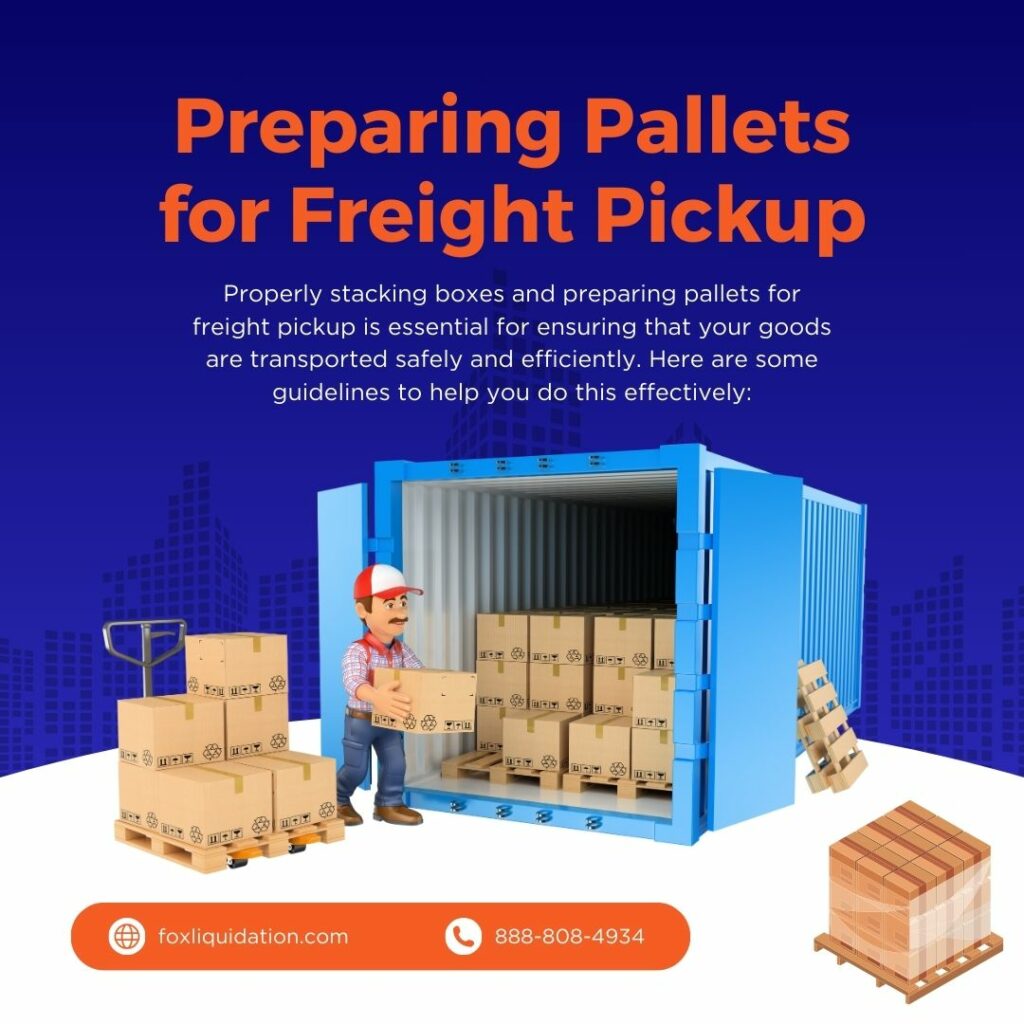
Step-by-Step Guide to Stacking Boxes and Preparing Pallets for Freight Pickup
- Choose the Right Pallet:
- Ensure the pallet is in good condition without any damage or missing boards.
- Use standard-sized pallets (48″x40″) unless specified otherwise by the carrier.
- Organize Your Boxes:
- Group boxes by size and weight.
- Ensure heavier items are placed at the bottom of the pallet and lighter, more fragile items on top.
- Stack Boxes Evenly:
- Start by placing the heaviest and largest boxes on the bottom layer.
- Distribute the weight evenly across the pallet to prevent tipping.
- Stack boxes in a way that the edges align and there are no overhangs.
- Use the interlocking stacking method where possible: stagger the boxes in each layer so they overlap, increasing stability.
- Build a Stable Structure:
- Stack boxes in columns, making sure each layer is as flat as possible.
- Avoid creating pyramids; aim for a flat top layer to facilitate easy stacking of additional pallets or items.
- Secure the Load:
- Use corner boards to protect the edges and add stability.
- Apply stretch wrap around the entire pallet load, starting from the base and working upwards. Wrap tightly to ensure the load is secure and will not shift during transit.
- Use strapping or banding for additional security, especially for heavier loads.
- Label the Pallet:
- Place a label with the shipment details, including destination, handling instructions, and any special requirements.
- Ensure the label is visible and secure.
- Check for Stability:
- Gently push the pallet to ensure the load is stable and won’t tip over.
- If the pallet wobbles or feels unstable, adjust the stacking and wrapping as necessary.
- Prepare for Pickup:
- Ensure the pallet is easily accessible for the forklift or pallet jack.
- Keep the area around the pallet clear to facilitate smooth loading onto the truck.
Additional Tips
- Uniform Box Sizes: Using uniform box sizes makes stacking easier and creates a more stable load.
- Pallet Configuration: Keep the height of the stacked pallet within acceptable limits (usually around 60-70 inches) to avoid issues with truck loading and unloading.
- Fragile Items: Clearly mark any fragile items and ensure they are securely packed to prevent damage.
- Load Distribution: Ensure the load on the truck is evenly distributed to prevent shifting during transit.
By following these guidelines, you can ensure that your pallets are prepared efficiently and securely for freight pickup, minimizing the risk of damage during transportation.
